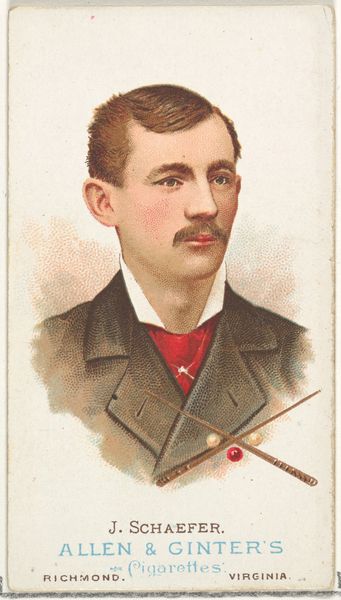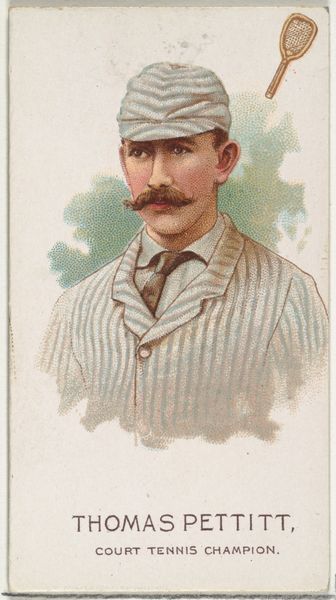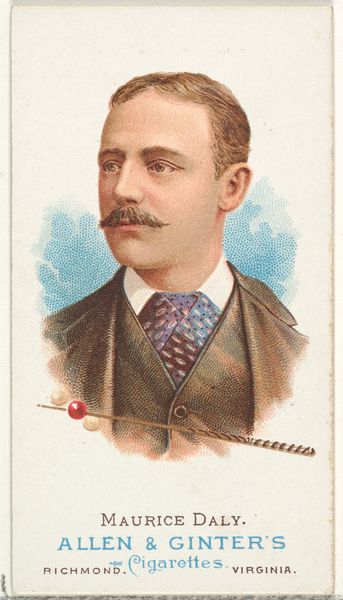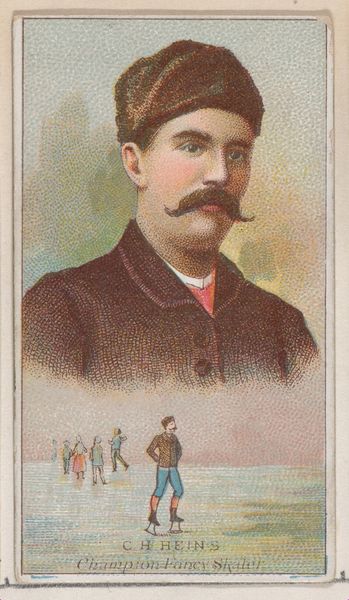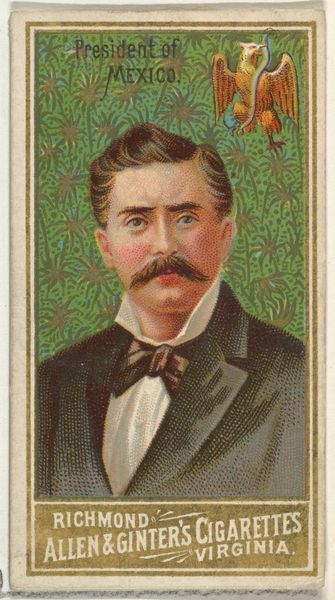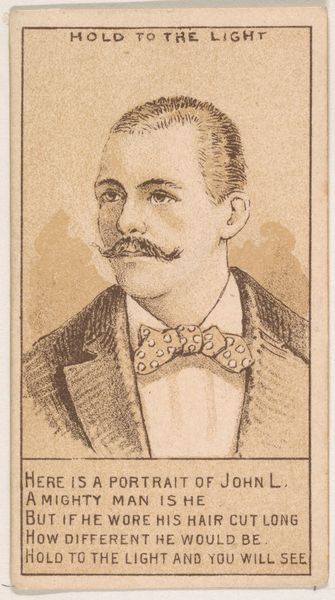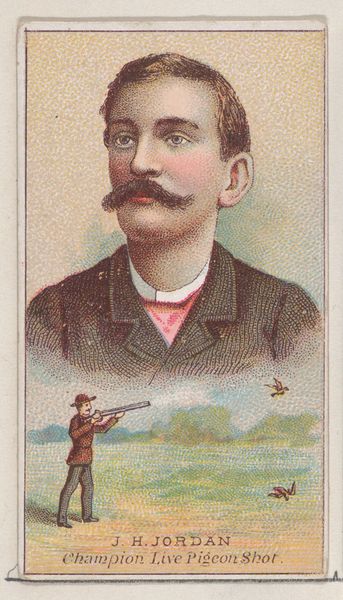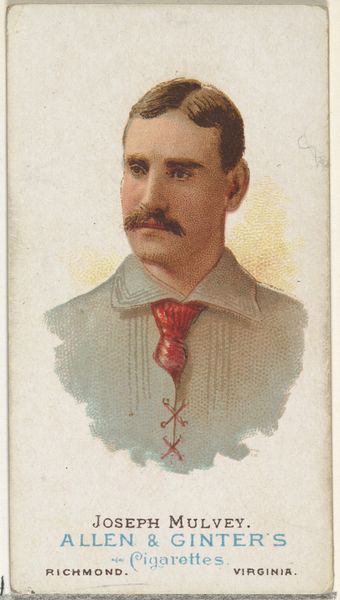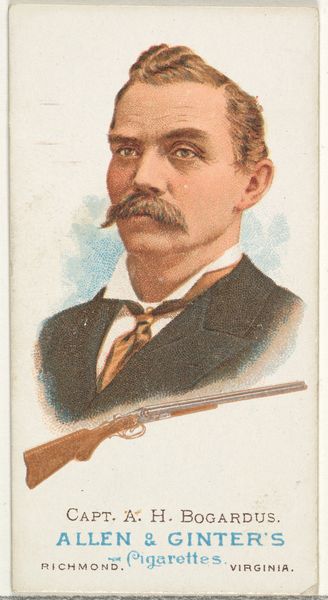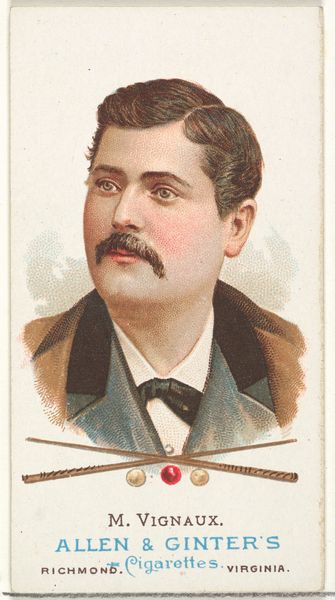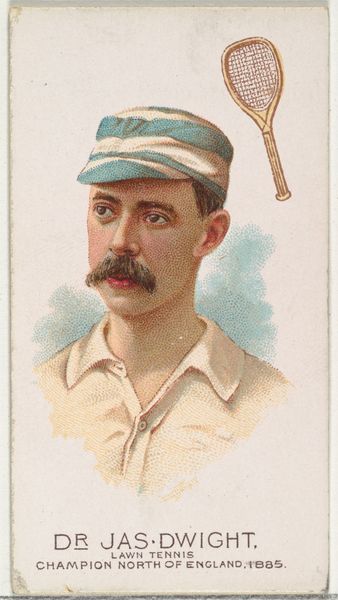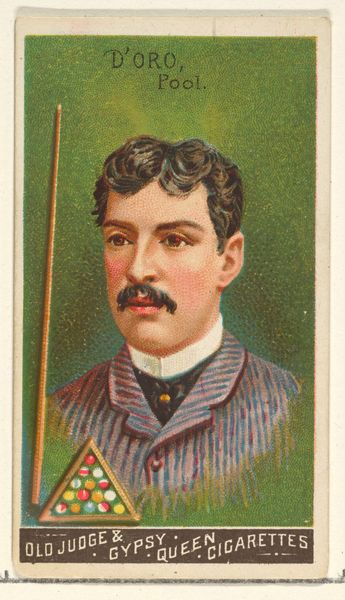
Frank B. "Yank" Adams, Billiard Player, from World's Champions, Series 1 (N28) for Allen & Ginter Cigarettes 1887
0:00
0:00
drawing, coloured-pencil, print
#
portrait
#
drawing
#
coloured-pencil
# print
#
impressionism
#
caricature
#
caricature
#
figuration
#
coloured pencil
Dimensions: Sheet: 2 3/4 x 1 1/2 in. (7 x 3.8 cm)
Copyright: Public Domain
Curator: Here we have "Frank B. "Yank" Adams, Billiard Player" a chromolithograph trade card made in 1887 by Allen & Ginter. These were included in packs of cigarettes, targeting a male consumer base. Editor: It's strikingly… clean. Crisp lines, limited palette. Not quite what I'd expect from an item designed to be, essentially, disposable advertising. There’s a strange flattening of perspective too; the billiard balls seem almost pasted on. Curator: Well, chromolithography was a relatively new technology then, allowing for mass production of color images. The cards served multiple functions. One was obviously advertisement, but they also were a marker of status. Collecting showed you were part of a leisure class. Editor: Right, so it’s about more than just selling cigarettes. Look at the detail in his moustache, compared to the simplified rendering of his hand—it feels as though they invested most of their effort where it really counts, communicating masculinity through the means of the picture card, in conjunction with their branded product. Curator: Exactly. Consider the social context: Cigarettes were gaining popularity, and branding them with figures of accomplishment linked smoking with success, especially targeted to working-class men who looked up to athletes like Adams. Editor: That’s an interesting point, particularly concerning labor and craft traditions. By choosing billiard players as a subject, there’s a leveling effect that connects industry to an ideal. What do you think the paper’s quality tells us about distribution or intended purpose? Curator: These were often collected and traded. They documented prominent figures of the time, becoming almost historical documents in their own right. Think about the limited color palette – economical and efficiently deployed to communicate luxury at a remove, where owning them all signifies success. Editor: So, while the materiality of the card is cheap in a way, it allowed the manufacturers to produce it affordably, facilitating distribution. It became about accessible status through consumerism. Quite telling, isn't it? Curator: It is. This little card holds a microcosm of late 19th-century aspirations, anxieties, and advertising strategies, revealing cultural obsessions embedded in everyday materials. Editor: It's a remarkable thing how this cigarette card illustrates its story so succinctly in material and image; advertising at its best or worst?
Comments
No comments
Be the first to comment and join the conversation on the ultimate creative platform.
